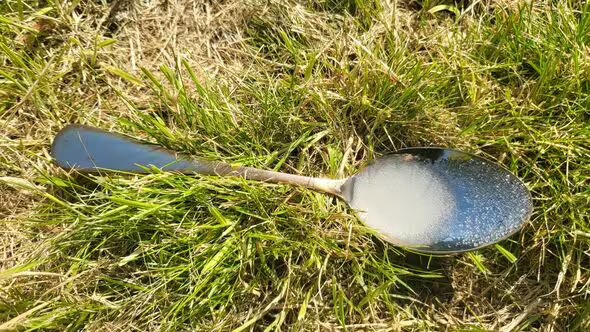
Gardeners Urged to Use Sugar Water to Save Bees in Hot Weather
As the hot weather continues, gardeners are being encouraged to use a spoonful of sugar water in their gardens this weekend. The warm and sunny conditions have been glorious, allowing us to enjoy our gardens, backyards, parks, and green spaces. This weather has also given a much-needed boost to plant growth after weeks of gloomy drizzle.
The Plight of Bees in Hot Weather
However, not everything in the garden benefits from constant sunshine. Bees and bumblebees often become exhausted and in need of a boost, or they may face the risk of dying. With bee populations already under threat from habitat loss, pesticides, and climate change, everyone with a garden is urged to help these vital pollinators. When bees are commonly seen in gardens during sunny weather, it’s not long before someone spots a struggling bee in need of assistance.
The Sugar Water Solution
In such situations, gardeners are asked to step in and, as a last resort, use a sugar water solution to revive tired bees. Gardeners’ World advises: “It’s not uncommon to find bumblebees at an apparent standstill appearing tired, particularly in winter or inclement weather. To get them back on their feet, you can mix a sugar solution by combining equal parts warm water and sugar. Place it near the bee’s head in a bottle cap or something similar, and it should stick out its proboscis to drink, energize, and warm up.”
Why Bees Are Essential
Beevive.com, a bee defense organization, warns: “In the city, tired bees are a common sighting due to fewer flower stops on the way back to the hive. You will find bees on the sides of paths or parks as they lack the energy to complete their foraging mission. Animals and insects are required for pollinating 80 percent of our flowering plants. All of our crops and vegetables, such as broccoli, strawberries, and tomatoes, would disappear without them, which would have disastrous effects on our ability to get food and rear livestock.”
Caution: Use Sugar Water Sparingly
However, gardeners are warned to use the sugar water trick only when necessary, targeting specific bees rather than leaving it out all the time, which can do more harm than good.
“Many of the headlines stating that sugar water is bad are only using clickbait methods and eventually conclude that it’s helpful to feed a one-off bee. Instead of giving one tired bee support, bees were being encouraged to these solutions in gardens and on window ledges. This is terrible for the hive because, unlike nutritious pollen and nectar, this solution will not feed the bee larvae properly and can also cultivate bacteria over time. Putting these out for bees will teach them to go there and leave the flowers unpollinated, as the RSPB also warns. In the long-term, it could even end up getting an unsuspecting beekeeper prosecuted as his ‘honey’ turns out to be only sugar syrup.”
How to Safely Use Sugar Water for Bees
Instead, gardeners are urged to do this to save a bee:
- Find a Nearby Flower: Try to find a nearby flower, preferably one high in nectar and pollen, such as buddleia, sunflowers, or knapweeds. This is the high-nutrient food that the bee has been searching for.
- Resort to Sugar Water: If the flower method fails, sugar water is needed.
The RSPB outlines how to use the sugar water method safely:
“It’s common to find tired bees on pathways, walls, and places you wouldn’t expect. In these cases, a simple mixture of around two tablespoons of white, granulated sugar with one tablespoon of water left on a spoon or in an eggcup is helpful for hardworking bees. It’s important to avoid leaving out honey or large containers of sugar water, as these are simply not viable long-term solutions for bees.”
By using sugar water responsibly, gardeners can help tired bees get back on their feet and ensure these essential pollinators continue to thrive.

